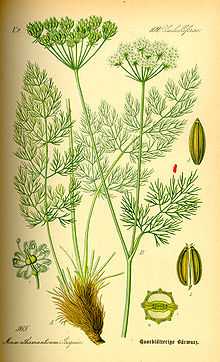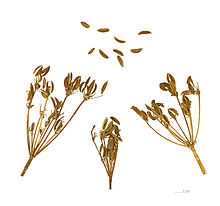Meum athamanticum
| Meum athamanticum | |
|---|---|
 | |
| Scientific classification | |
| Kingdom: | Plantae |
| (unranked): | Angiosperms |
| (unranked): | Eudicots |
| (unranked): | Asterids |
| Order: | Apiales |
| Family: | Apiaceae |
| Genus: | Meum |
| Species: | M. athamanticum |
| Binomial name | |
| Meum athamanticum Jacq. | |

| Wikispecies has information related to: Meum athamanticum |
| Wikimedia Commons has media related to Meum athamanticum. |
Meum athamanticum is a glabrous,highly aromatic (aroma compound), perennial plant - the only species (monotypic) in the genus Meum, belonging to the family Apiaceae.Common names in the U.K. include Baldmoney,Spignel,(also Spiknel and Spikenel) and Meu. It is a plant of grassland,often on limestone, in mountain districts of Western Europe and Central Europe,its range extending as far south as the Sierra Nevada (Spain) of Andalucia,and central Bulgaria in the Balkans. It is not a very common plant in the U.K., being found in only a few localities in N. England and N. Wales although a little more plentiful in Scotland - where it is found as far North as Argyll and Aberdeenshire.[1]
Meum has been cultivated in Scotland,where the roots were eaten as a root vegetable.The delicate,feathery foliage has been used as a condiment and in the preparation of a wide variety of home remedies as a diuretic,to control menstruation and uterine complaints and to treat catarrh, hysteria and stomach ailments.[2]
The scent of the roots of Meum has much in common with those of two other edible/medicinal umbellifers : Levisticum officinale and Angelica archangelica,while the aromatic flavour of Meum leaves is somewhat like Melilot (which owes its aroma of new-mown hay to coumarin) and is communicated to milk and butter when cows feed on the foliage in Spring.The curious name Baldmoney is said to be derived from the name of the god Baldr (Scandinavian mythology) - to whom the plant was dedicated.[3]
References
- Pink, A. (2004). Gardening for the Million. Project Gutenberg Literary Archive Foundation.
'Baldmoney' was the name of one the gnomes whose tales were related in the book The Little Grey Men by BB.